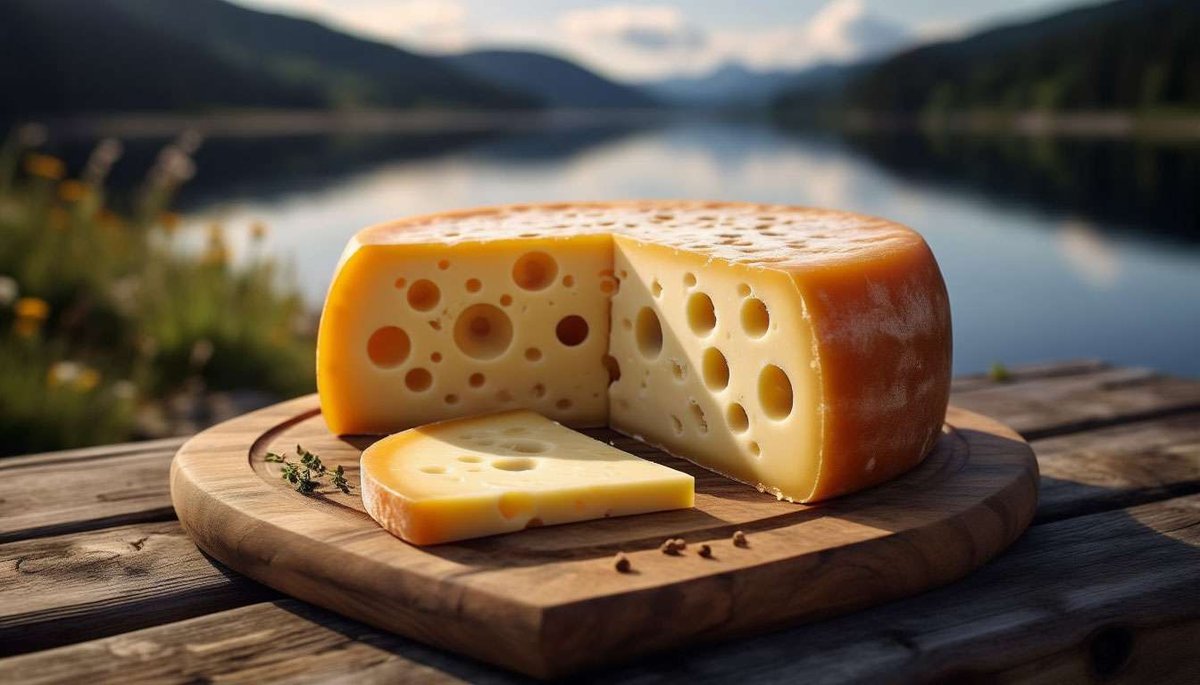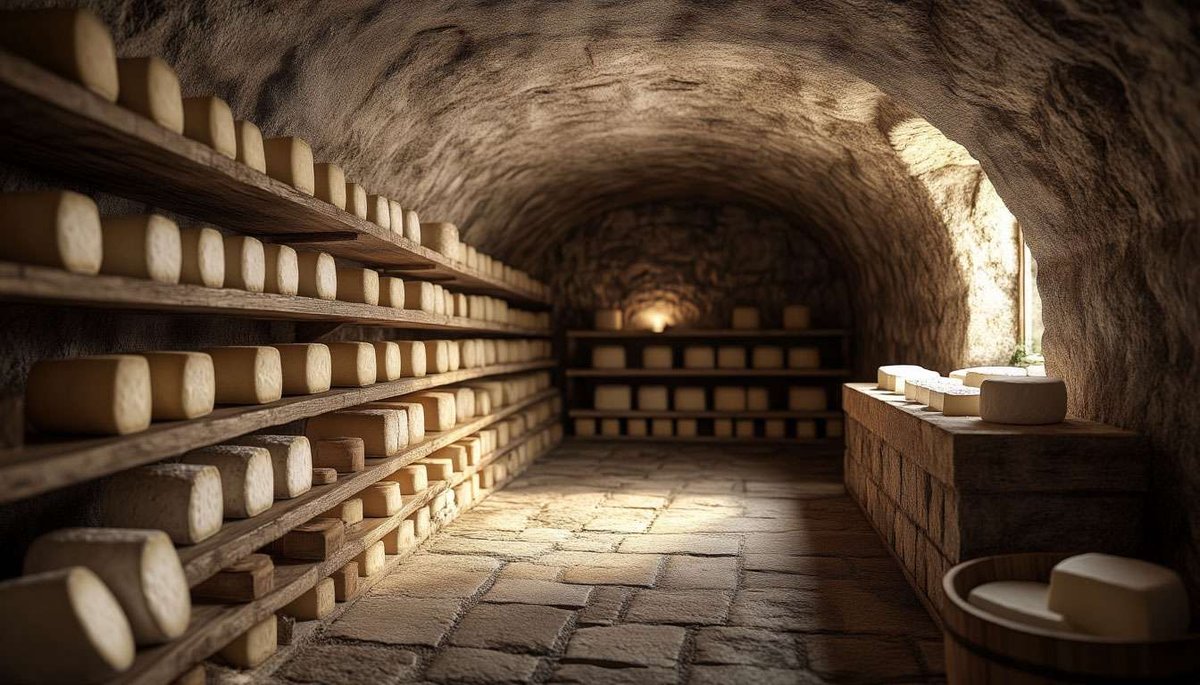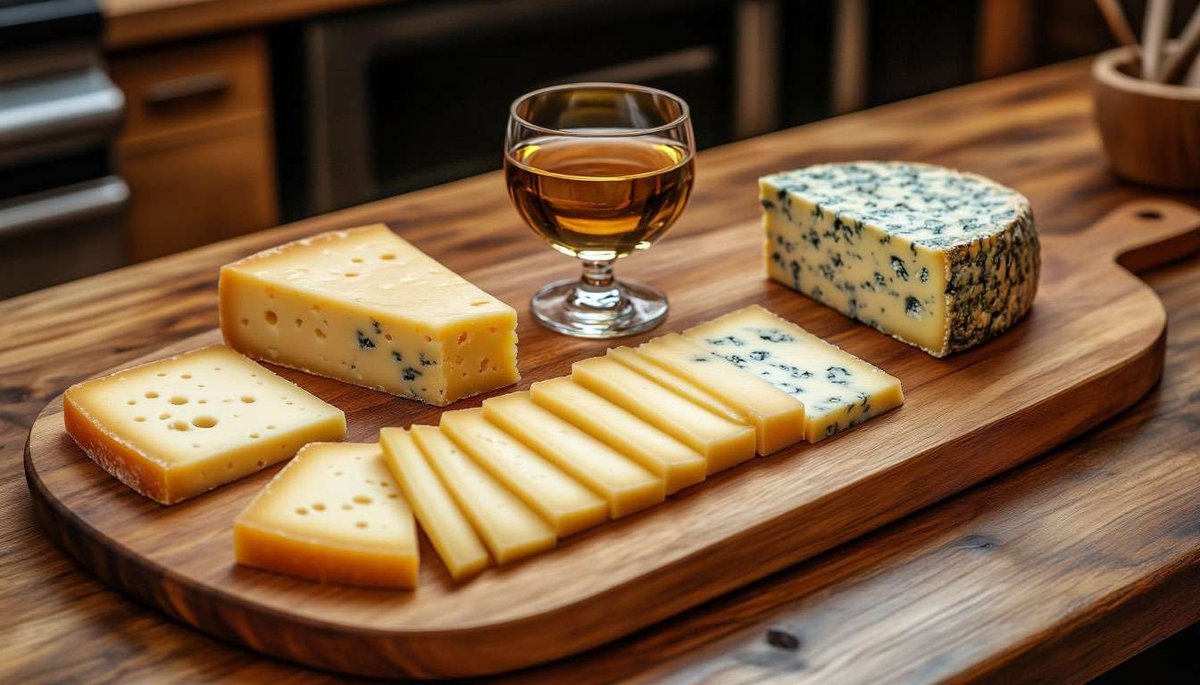Jarlsberg and the cheese revolution: how the 'Norwegian Emmental' conquered the world and why farmers make cheese in the shadow of the fjords

Norway is not particularly associated with cheese until a golden wheel of Jarlsberg with large holes and a nutty, sweet aroma appears on the counter. But beyond the supermarkets lies a whole universe of farmhouse cheeses, from the blue Kraftkar, winner of the World Cheese Awards, to goat's cheeses matured in the caves of Hardanger. Let's uncover the secret of "Norwegian Emmental" and plan a route through the country's cheese valleys.
Who invented Jarlsberg and is it true that the recipe is a secret?
Jarlsberg was not born in an Alpine chalet, but in a laboratory at the Norwegian Agricultural University. In 1956, scientist Ole Martin Johansen decided to revive a forgotten cheese from the county of Jarlsberg. He crossed the traditional Norwegian "Swiss" recipe with modern propionic acid bacteria cultures, which are responsible for the sweet taste and large "holes". The exact formula for the starter culture and the ripening process (12–15 °C, 3–5 months) are still kept in a safe at TINE. Factories abroad receive only the bacterial concentrate and instructions, but the core technology remains a Norwegian secret.
How does Jarlsberg differ from Swiss Emmental and Norwegian Gouda-type cheeses?
The main difference is the balance of sweetness and nutty bitterness. Jarlsberg contains slightly more lactose, which the Propionibacterium freudenreichii bacteria actively convert into propionic acid and CO₂, forming large eyes and a caramel-nutty profile. Swiss Emmental matures longer and has a more "cheesy" aroma, while the Norwegian Gouda line (Gamle Ola) is denser and without holes. Jarlsberg is versatile: it melts without separating the oil, making it ideal for grilling, fondue and cheese sauce for pasta.
Which Norwegian farmhouse cheeses have earned worldwide recognition?
- Kraftkar (Tingvollost): a blue cheese made from milk from cows grazing on the coast, named "World's Best Cheese" in 2016.
- Fanaost (Ostegården): a semi-hard cow's milk cheese, winner of the World Cheese Awards 2018.
- Chevre fra Haukeli: a soft goat's cheese with a slight acidity, winner of a gold medal at the Nordic Dairy Awards.
- Rueslåtten Ysteri St Pål: an Alpine-style cheese with a washed rind and a nutty, pine aroma.
These cheeses are produced by micro-dairies from Telemark to Vestland, with each batch weighing less than a tonne, giving them an "art vintage" value.

Where can tourists try and buy Norwegian cheeses?
- Mathallen Vulkan (Oslo) – Ost & Sånt cheese shop with "Best of Norway" tastings.
- Ciderhuset Balholm (Hardanger) – a set of cider, goat's cheese and hard cheeses from the valley.
- Tingvollost gårdsbutikk (Tingvoll) – tour of the Kraftkar micro-cheese factory with a master class.
- Ostegården (Bergen, Fana) – Fanaost vs. Jarlsberg tasting in a cheese cellar.
Look for the Lokalmat range in Meny and Coop Mega supermarkets; it labels regional cheeses in 250–500 g vacuum packs.
What to pair Jarlsberg and farmhouse cheeses with: drinks and food pairings?
Jarlsberg goes well with Hardanger cider and light white wines (Riesling, Grüner Veltliner). Kraftkar and Fanaost call for a sweet accent: ice cider or port wine. Goat's Chevre fra Haukeli will sound great with berry fruit punch or pink sparkling wine. A Norwegian classic is a slice of Jarlsberg on bread with strawberry jam and filter coffee: the combination of sweetness, nuts and the acidity of the coffee brings out the cheese's unexpected brightness.
How to store and serve Norwegian cheeses at home?
Hard and semi-hard cheeses (Jarlsberg, Fanaost) should be stored at +4°C in parchment paper, changing the paper once a week. Before serving, leave at room temperature for 30 minutes to allow the fats to release their aroma. Blue and soft cheeses (Kraftkar, Chevre) should be stored in their original foil and served slightly chilled so that the texture does not melt. If you are taking cheese home, vacuum packing will preserve the flavour for up to 6 weeks; transport it in your hand luggage – the hard luggage compartment dries and shakes the cheese.

Norwegian cheeses are a story of science, master craftsmen and pure milk from fjord pastures. From the shiny holes of Jarlsberg to the thick blue mould of Kraftkar, every flavour carries notes of the mountains, the sea and northern patience. Plan your cheese route: start with a tasting at Mathallen, head to Hardanger for cider and finish with dinner in Bergen with a plate of Fanaost and aquavit. Bring home a wheel of Jarlsberg and the comforting taste of nutty caramel will remind you of Norway even on the rainiest day.





2 comments
Log in to leave a comment